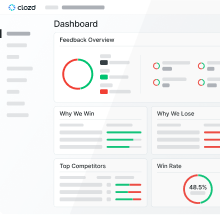
For the first eight years of my career I was fortunate to work for one of the hottest companies in tech. I took part in their explosive growth from 40 employees to more than 1300, with revenues growing almost 1000%. Just weeks after my departure they announced another impressive round of funding at an eye-popping valuation ($2.5 billion). This company, Qualtrics, is currently the most valuable private tech company in Utah; and, if you know about the proliferation of successful tech startups in Utah, you’ll know that’s a significant achievement. So why did I leave? I’ll get to that.
I’ve talked with a lot of people who are intrigued by the Utah tech scene. They’re curious what’s driving the success. Why would Utah, of all places, emerge as a leader in tech? One hypothesis, that I think has merit, is that the success is driven as much by sales prowess as it is by great products. In other words, Utah tech companies are really good at sales. I’ve seen several silicon valley software giants visit Utah to study the sales teams here. It’s why many of them setup sales offices along the Wasatch Front, tapping into the unique pool of sales expertise and talent that runs up and down Utah’s “Silicon Slopes.”

With that in mind, those same people inevitably ask me, “What are the secrets that make Utah tech companies so great at sales?”
It could take a dozen articles to answer that - and I don’t claim to have all the answers. But, from experience, there's one thing every B2B sales team can do to improve results and increase win rates. I’d bet on it. In fact, I have bet on it. I left a phenomenal job at a historic company so that I could help sales teams implement this critical strategy.
So, here it is . . .
Find out, from decision-makers, why you won or lost their business.
You’ll notice I said from the decision-maker. If your conclusions about why deals are being won and lost aren’t based on direct feedback from decision-makers at your won or lost accounts, then you’re conclusions are at best incomplete and at worst, completely inaccurate. An article in Harvard Business Review by sales guru Steve W. Martin sums it up nicely:
You truly can’t train your sales teams on how and why prospective customers make their buying decision if your training isn’t based upon direct interviews with decision makers at won and lost accounts.
And what’s shocking is that fewer than 20% of sales organizations conduct in-depth, post-decision interviews with their prospects and customers. They either do nothing, or they use one of three ineffective alternatives:
Common (But Flawed) Alternatives to Direct Buyer Feedback
1. The CRM Trap: Relying on Incomplete Data
A lot of sales teams ask reps to select the reason for the win or loss using a drop-down menu in their CRM. Not only do most reps leave the field blank, but those that do provide an answer are probably wrong anyway. In fact, research shows that sales reps have wrong or incomplete information about 60% of the time.
2. The Post-Mortem Problem: Internal Bias vs. Buyer Truth
Say your company just lost a big opportunity on the last day of the quarter. The CEO is demanding an explanation. What do most sales leaders do? They hold a post-mortem. They get everyone in the same room and ask what went wrong. Not only do the employees in the room not know why they lost the deal, but they just self-optimize. They play the blame game.
3. Survey Limitations: Missing Depth and Nuance
Some sales teams realize they need something more substantial, so they send a survey. A survey might be the answer for transactional businesses with small deal sizes; but, for companies with complex and expensive sales cycles, a survey lacks the professionalism, adaptability, and depth of an actual conversation. Even Qualtrics, the premier survey research company in the world, knew surveys wouldn’t cut it for their win-loss analysis program.
So, how do world-class sales teams do it?
They enlist a neutral, third-party to conduct frequent, in-depth interviews with the decision-makers at their won and lost accounts. In so doing, they harvest critical insights about how and why their best reps win, gaps in their product offering, sales training opportunities, competitive intelligence, and much more.
As time goes on, the learnings of these win-loss interviews become the basis of all their sales trainings. Executives hungrily review the transcripts for a glimpse of what’s happening in the sales trenches. New hires devour the details of how their successful predecessors landed big accounts. Tenured reps tap the feedback for the scoop on key competitors. Product managers rejoice at having actual, quantifiable data about which product gaps are blocking the most revenue.
And, most importantly, there’s research that shows how formal win-loss analysis influences sales performance.
Research by Aberdeen Group suggests that sales teams who conduct formal win-loss analysis have higher quota attainment rates, shorter sales cycles, and higher revenue growth rates than companies that don’t.
If win-loss analysis can influence a single percentage point increase in win rates, that translates to millions of dollars in additional revenue for most companies.
What's the ROI of Win-Loss Analysis?
So, at the end of the day, I can’t give you all the secrets about what makes Utah sales teams great. But if you want to increase win rates, one surefire way to do it is to implement a formal win-loss interview program. And that’s why I left Qualtrics. I’m starting a company called Clozd. Not only can we interview decision-makers on your behalf, but we’re building innovative software that gives unprecedented org-wide access to win-loss findings.
If you’re a sales leader, and your sales team is ready for a transformation, check us out at www.clozdinc.com/win-loss-analysis.
Sources
- https://hbr.org/2012/07/whats-wrong-with-your-sales-tr
- http://pragmaticmarketing.com/resources/the-eight-rules-of-successful-winloss-analysis
- Schroder, Richard M. From a Good Sales Call to a Great Sales Call: Close More By Doing What You Do Best. N.p.: McGraw-Hill, 2011.
- http://v1.aberdeen.com/launch/report/research_report/8990-RR-sales-win-loss-analysis.asp











.svg)






.png)



.svg)

.svg)




